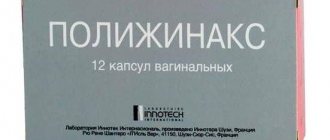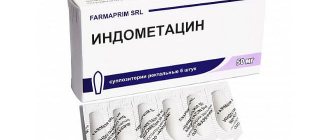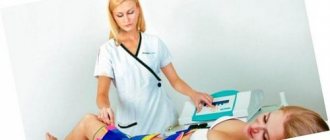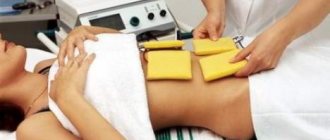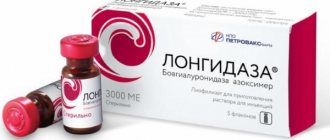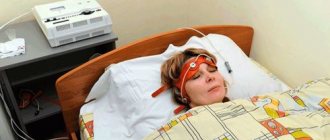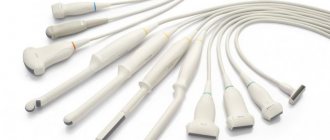It is impossible to cure diseases of the female reproductive system only with pills or suppositories. Often diseases are caused by anatomical disorders, so treatment must be approached comprehensively. Mud therapy and electrophoresis are most often used in gynecology. These procedures involve the administration of a variety of drugs and medications through the skin. Due to this entry into the body, they do not harm the gastrointestinal tract. The basis of the therapeutic electrophoresis procedure is a direct current that affects the body at certain frequencies. It is necessary in order not to start the disease and to manage only with therapeutic methods.
What is electrophoresis
Since ancient times, there has been a pressing topic about the positive impact of current on human health in general.
Medicinal electrophoresis affects the body with a direct electric current in combination with the introduction of medicinal substances through the skin or mucous membranes.
The use of electrophoresis in physiotherapy is very popular, as it has positive effects on the body:
- reduces inflammation;
- relieves swelling;
- eliminates pain;
- acts as a sedative;
- improves microcirculation;
- stimulates the production of vitamins, microelements, hormones;
- activates the body's protective functions.
Nowadays, medicinal electrophoresis is widely used in various areas of medicine:
- In the field of traumatology;
- Diseases of ENT organs;
- General therapy;
- Dentists often use electric current;
- The gynecological direction did not escape fate either.
The electrophoresis procedure is very simple and cannot cause pain to the human body. The maximum sensation from this procedure is a slight tingling sensation in the area where the drug was administered.
Electrophoresis is prescribed by a doctor; the patient should have no contraindications. The procedure is carried out under the strict supervision of a specialist.
The main advantages of electrophoresis over other treatment methods:
- The medicine is administered in a small volume, which reduces the chance of side effects;
- The injected agent is concentrated in the tissue at the site of the applied electrodes. In this way, a “depot” is created, which over time is distributed throughout the body along with physiological fluid. The effect from the “depot” lasts for a long time;
- The local method makes it possible to avoid the passage of the drug through the digestive tract. There is no contact with gastric juice, saliva and does not harm the microflora of the stomach;
- The medicine penetrates directly to the site of inflammation, even if microcirculation in the surrounding tissues is impaired;
- A very high therapeutic effect is created by splitting into ions (the most active particles);
- Electrophoresis in gynecology is prescribed even to pregnant women.
When is physiotherapy prescribed?
The main indications for using the technique are:
- gynecological surgical interventions;
- abnormal development of the genital organs;
- uterine hypoplasia;
- inflammatory processes of nerves in the hip area;
- preparation for pregnancy or in vitro fertilization protocol;
- diseases of the mammary glands;
- obstruction of pipes;
- inflammatory processes in the uterus;
- lack of ovulation;
- cleaning the uterus;
- infertility;
- hormonal disbalance.
With tubal infertility, the work and structure of the appendages is disrupted.
The causes of the pathology are: infectious and inflammatory processes, endometriosis, surgery on the pelvic organs. Obstruction of the tubes is most often associated with the presence of infections. Thus, chlamydia, causing inflammation, leads to the destruction of fimbriae and the formation of hydrosalpinx. Mycoplasmas, settling on the cells, attach to the sperm and slow it down. Ureaplasma penetrates the tubes with the help of sperm, causing their obliteration. Also, the causative agents of this disease have a toxic effect on the ciliated epithelium, which leads to a significant decrease in the rate of passage of the egg into the uterus. In addition, viruses lead to a decrease in the immune system. Peritoneal infertility occurs in 39% of women suffering from pathology. The disease is caused by adhesive processes occurring in the appendages. The causes of development are surgical interventions, endometriosis, and inflammatory processes.
Any surgical procedure performed in gynecology can provoke the occurrence of adhesions. Physiotherapy in the postoperative period accelerates tissue regeneration, promotes recovery, and reduces the risk of developing undesirable consequences.
Contraindications to the procedure
Although electrophoresis is one of the most widely used medical procedures, it also has contraindications:
- Tumors of varying degrees;
- Pathologies of blood vessels and heart. But not all, some types of this type of disease require additional consultation with a specialist;
- Increased body temperature;
- Inflammatory process in the body;
- Skin problems such as eczema, dermatitis;
- Individual intolerance to a medicinal substance or electric current;
- Mechanical damage to the skin at the sites where the electrodes are applied;
- Presence of an artificial pacemaker (pacemaker);
- A disorder associated with blood clotting;
- Severe form of bronchial asthma.
Menstruation is not an absolute contraindication to the electric current treatment procedure. Menstrual bleeding is a natural process that was not created “specifically” by an external or internal factor (inflammation or infection). Electrophoresis is not advisable during the period of bleeding, if the place where the electrodes are applied is the area of the uterus or ovaries.
Gynecology and physiotherapy using electrophoresis
Physiotherapy procedures are not only very effective, but also safe. In medicine, magnetic therapy, phototherapy, massage, and electrophoresis are used.
In the modern world, women are increasingly complaining about problems in gynecology. The problem of infertility among young girls is especially pressing.
Often diseases associated with chronic inflammation in the female genital organs:
- Uterus;
- Ovaries;
- Fallopian tubes;
- Female appendages.
These problems can lead to adhesions, resulting in infertility.
If a doctor prescribes treatment by injection or by taking a medicine orally, most of it does not reach the desired goal, and puts a strain on the liver and kidneys. The final result may be an untreated disease, problems with the stomach, liver, allergies, low immunity, etc. Therefore, doctors often resort to electrophoresis.
The current treatment procedure relieves inflammation, resolves adhesions, and restores the patency of the pipes. In this simple and effective way, girls are saved from the stigma of “infertility” and after the procedure they successfully become pregnant. Of course, if there are no other reproductive problems.
Electrophoresis can also be prescribed to women:
- With a cyst;
- With established endometriosis,
- For painful periods;
- During pregnancy;
- During the period of toxicosis;
- Various menstrual cycle disorders;
- During inflammation in the pelvis.
During the period of acute exacerbation, the treatment procedure with electrodes is not carried out. But if the disease is subacute, this speeds up the healing process.
What solutions are used to treat the uterine organs with electric current?
The concentration of the solution and its quantity are determined by the doctor after a complete diagnosis and determination of the method of treatment. During the treatment of endocervicitis or erosive processes in the cervical uterus, a zinc solution with a percentage concentration of the active agent is used. If the patient has been diagnosed with inflammatory processes that are chronic in nature, electrophoresis is carried out using a solution of potassium iodide.
The most commonly used solution in the gynecological area is lidase. With its help, electrotherapy is performed to soften scars formed after performing surgical procedures. This solution is also used to improve blood circulation and relieve swelling. As practice shows, lidase has a unique effect in the treatment of the formation of adhesions in the uterine tubes. Some patients may experience an allergic reaction to the use of a particular solution, therefore, before performing procedural treatment, it is necessary to select comparative tests to identify allergens. For these purposes, hyaluronidase is used.
Medication for electrophoresis
Prepared drug solutions may contain purified alcohol or dimexide. It is important to know that the composition of the medicinal solution and its dosage are determined by the leading specialist purely individually.
Electrotherapy for detecting fibroids in the uterine organ
If fibroid formations are detected on the walls of the uterus, doctors prescribe an electrotherapy procedure. Electrophoresis in this case is intended to perform the following tasks:
- Elimination (complete or partial) or reduction in the level of manifestation of diseases that accompany the development of the inflammatory process;
- Restoring the full functioning and hormonal levels (activity) of the ovaries;
- Normalization of the myometrial state of the uterine organ;
- Restoring the normal menstrual cycle in patients of reproductive age (with the removal of non-ovulation cycles);
- Reducing the level of influence of hormones on the layers of the uterine organ of patients who have passed childbearing age or entered the menstrual pause phase.
To treat fibroids under the influence of electric current, solutions containing iodides are used.
In this video you will learn in detail about fibroids in the uterus:
Medicinal substances for electrophoresis
The electrophoresis procedure may include vitamin complexes, enzymes, antiseptics, vasodilators, and sedatives.
The following medicinal substances can also be administered through the skin and mucous membranes:
- Iodine;
- Magnesia;
- Papaverine;
- Lidaza;
- Eufillin;
- Zinc;
- And others.
It all depends on the diagnosis. The course of treatment and dose are prescribed by the attending physician.
Below are approximate treatment regimens with electrophoresis for various diseases:
- Algomenorrhea . These are painful periods that occur a few days before the start of menstruation and go away over a period of time. Pain varies in intensity. Treatment with electrophoresis is to relieve pain and spasms. Novocaine is used as a medicine. Electrodes are placed on the lower abdomen. Typically the course consists of 6-8 sessions. It is advisable to time the days so that treatment is completed before the onset of menstruation.
- Various inflammations caused by hypothermia or penetration of infection inside are treated with electric current after the acute inflammation, if present, is removed. To consolidate the effect of the main treatment, electrophoresis with iodine compounds and potassium iodide may be prescribed. It helps relieve inflammation, also has a positive effect on the endocrine system, balances the functioning of the ovaries, thyroid gland and pituitary gland.
- Endocervicitis and erosion are treated with a 2.25-0.5 zinc solution.
- Zinc is used for incomplete function of the corpus luteum .
- To soften scar-like formations , relieve swelling, and increase blood circulation, electrophoresis with lidase is most often used. Quite often, lidase is used in the field of gynecology, as it copes well with adhesions in the fallopian tubes. Sometimes lidase is combined with zinc.
Thanks to Lidaza, many women have become happy mothers. But allergic reactions to this substance occur, so it is recommended to carry out a test before the procedure.
Dissolve medications in water, alcohol or using Dimexide.
PHYSIO during planning and IVF
All reproductive specialists conduct IVF in their own way, many act according to a standard scheme, and some select support individually and prepare the patient as much as possible for a successful protocol (there is a queue for such specialists and there are many good reviews).
Analyzing successful protocols, I noticed that many were prescribed physiotherapy a month before the protocol. Reviews from IVF mothers are only positive; physiotherapy has helped many with endometrium and adhesions; inflammation has gone away. I’m talking to IVF doctors here, and it turns out that many haven’t even heard of electropheresis and magnets, and doctors themselves are in no hurry to prescribe them. But these procedures can be done for free at the clinic (only sometimes you need to buy the solution yourself). I made a detailed selection of several articles for myself, I’m sharing with you, girls) For various diseases, electrophoresis is prescribed as a physiotherapeutic procedure. At its core, it is the penetration of drugs through the skin (or mucous membranes) using an electric current. The drug decomposes into ions in an aqueous solution. When current is passed through such a solution, the particles begin to move, thus entering the patient’s body. The medicine is evenly distributed in the tissues and gradually absorbed into the blood and lymph. The maximum amount of the drug is concentrated in the area through which the injection was carried out.
Thus, electrophoresis is prescribed for various diseases, mainly of an inflammatory nature, and in various fields of medicine. The attending physician determines which drug electrophoresis is used for a particular disease, and the doctor will also indicate whether it is necessary to alternate electrophoresis with another drug, what the dosage should be, the duration of the procedure and the course of treatment.
During electrophoresis, various medications are used for different indications, for example, lidase, papaverine, aminophylline, potassium iodide, zinc, copper, various groups of antibiotics, etc. For example, in gynecology, the choice of a drug for electrophoresis is determined by the hormonal background, the activity and functionality of hormone-dependent and genital organs, in particular the ovaries, in some inflammatory processes, for example, adhesions. If the ovaries function normally, without complications during the acute phase of adhesive disease, electrophoresis with the administration of iodine should be prescribed. If there is hypofunction of the ovaries of the female reproductive system when adhesive disease is activated, electrophoresis with copper and zinc is prescribed. But in this case, it is important to make sure that the body is in a state of estrogen saturation, and in the case of non-functional corpus luteum of the ovaries, only electrophoresis with zinc should be used.
The zinc solution is administered using electrophoresis, following the cutaneous-vaginal method. Electrophoresis procedures with zinc are prescribed every day or every other day, the duration of the treatment course is usually 25-30 procedures. Between courses of electrophoresis it is necessary to take breaks, which can be no more than two months. In addition to the adhesive process, in gynecology, electrophoresis is prescribed for endometriosis, fibroids, fibroids, diffuse mastopathy, etc. ovarian hypoplasia, etc. Electrophoresis in gynecology is contraindicated in the case of genital tuberculosis, sexually transmitted diseases, chronic inflammatory processes, etc.
In addition to gynecological applications, zinc solution is used in the field of rheumatology, for example, for the treatment of arthrosis, spondylosis, etc. A microelement such as zinc is necessary for adequate life and function of connective tissue, tendons, muscles, ligaments, joint capsule and capsule.
To do this, purchase a two percent solution of zinc sulfate in an amount of 205 ml, depending on the amount of work. The duration of one session of electrophoresis on the area of the affected joint is 15-20 minutes, the procedures are carried out every day for twenty days.
Combined solutions - from zinc, magnesium and calcium, for electrophoresis. Working electrodes are applied to the lower abdomen during adhesive disease, always in the absence of an active inflammatory process. In case of severe pain, it is necessary to add a solution of novocaine.
The inflammatory process in a woman’s genital organs can be combined with another non-inflammatory disease, for example, fibroids; the electrophoresis solution contains zinc and iodine ions. Thus, iodine inhibits the secretion and release of follicle-stimulating hormone, and zinc stimulates the secretion and release of luteinizing hormone from the main gland of the body - the pituitary gland.
With fibroids, the zinc content in a woman’s body decreases, and the amount of copper ions increases, and in a state of complete health, these data are completely opposite. To treat this imbalance, electrophoresis is performed using a zinc solution on the lower abdomen, this inhibits the growth of fibroids and reduces hyperestrogenemia.
In adolescence, the development of female genital organs may not correspond to age-related indicators due to various reasons, mainly hormonal dysfunction; for this purpose, copper is administered by electrophoresis.
In women, the cause of infertility is often adhesions that affect the uterine cavity and endometritis - this is inflammation of the upper layer of the endometrium and a change in its structure. There are two ways to treat this condition - surgery and conservative therapy. Electrophoresis with lidase is most effective in the early stages of the disease. In gynecology, this method is used quite often. Doctors say that the drug perfectly dissolves hyaluronic acid, which is a structural element of connective tissue. As a result of the procedure, women share their impressions, blood circulation is restored, scars are softened, and swelling is reduced. Lidaza helps restore patency of the fallopian tubes. However, the use of this remedy also has its contraindications. Electrophoresis with lidase is not prescribed during pregnancy or lactation. Experts warn that the procedure is prohibited in the presence of malignant tumors. Acute inflammatory processes are also contraindications. Better results can be achieved if drug therapy and electrophoresis with lidase are used simultaneously. Reviews from many patients confirm that this treatment is very effective. Quite often, the drug removes adhesions by 100%. The current itself “breaks up” the formations, and lidase enhances the positive dynamics.
Electrophoresis based on antibiotics
has been actively studied since 1946. Through countless scientific studies, it has been concluded that antibiotics can be administered by electrophoresis, and this method of delivering antimicrobial drugs into the body has more advantages than oral or parenteral administration of drugs. After the physiotherapeutic method, antibiotics act in the body for a longer period, and in smaller quantities remain in the blood, urine, etc.
Electrophoresis with penicillin, streptomycin, and nitrocycline is classically used. To obtain a solution, the drugs are dissolved in distilled water, but when administering tetracyclines, acidified distilled water should be used. For electrophoresis, a solution of erythromycin is prepared in seventy percent alcohol.
Electrophoresis as a medical procedure has a number of contraindications. Firstly, these are various skin diseases (eczema, wounds, dermatitis). In addition, the method is not used in the presence of tumors or the patient’s tendency to bleed. Contraindications include elevated body temperature, asthma, and inflammation. Doctors point to the fact that there is a group of people who have increased sensitivity to electrical current. Also, electrophoresis with lidase or other drugs in rare cases can cause allergic reactions. Therefore, before carrying out the procedure, a sensitivity test to the components of the medicinal product is required. In turn, patients say that this method is practically painless and does not affect the digestive tract. In addition, electrophoresis, according to reviews from parents, is well tolerated by children. And if you do not overdo it and use a minimal amount of the drug, this reduces the risk of adverse or allergic reactions.
Features of electrophoresis during pregnancy
Pregnancy is an unusual condition for a woman. It is during this period that many medications are prohibited, some of them can cause miscarriage or abnormal development of the embryo.
Electrophoresis is considered one of the safest methods of treating women in an interesting position. In addition, there are a number of drugs that do not harm intrauterine development. And the direct effect on the source of inflammation, and not on the entire body as a whole, makes this procedure an indispensable remedy.
The only thing you need is to adhere to the prescribed regimen and be constantly under the supervision of a specialist.
Indications for electrophoresis during pregnancy:
- Hypertonicity of the uterus;
- Threat of miscarriage;
- Preeclampsia and swelling from it.
During the procedure, electrodes are applied to the cervical-collar area or mucous membranes of the nose, avoiding the abdominal area. In these cases, vitamin complexes and essential microelements can be administered.
During pregnancy, electrophoresis is prescribed after 8 weeks. Most often, magnesium (magnesia), papaverine or suppositories with it and aminophylline in small quantities are used.
There are contraindications for the electrophoresis procedure for a pregnant woman:
- This is a condition of the unborn child that does not tolerate electric shock or medication;
- Low blood clotting;
- Liver and kidney diseases;
- Late gestosis with convulsions - so-called eclampsia;
- Nausea and frequent vomiting.
What women say
Almost every review has a positive connotation. Many women noted good health after a course of electrophoresis treatment. And the use of lidase during pregnancy is a separate issue. According to reviews from former patients, it was this procedure that helped them conceive the long-awaited baby.
Some pregnant women took the course during the period of toxicosis and in this way improved their well-being, thanks to the effect on the vomiting centers of the brain.
Whatever it may be, electrophoresis is a medical procedure and should be taken seriously. Only a highly qualified specialist can prescribe it; he also takes into account the woman’s condition, contraindications, individual characteristics and possible reactions.

